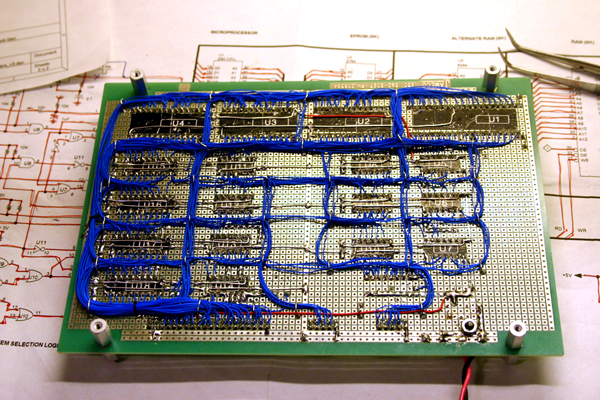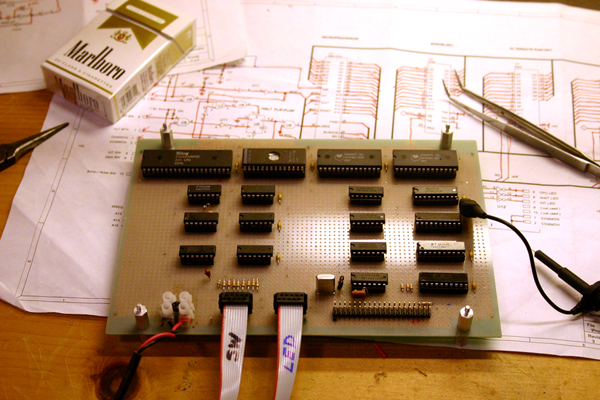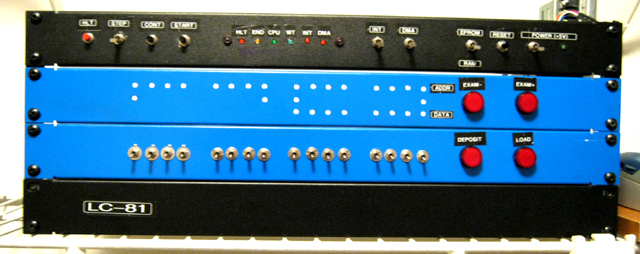
 |
Homebrew Mini-Computer based on Z80 CPU |
armandoacostawong@gmail.com |
What I mean by "the microprocessor did something"? Well, I'm employing a surplus used EPROM that contains software definitely not written for the LC-81! --but good enough for having my poor microprocessor busy for a while.
The test can be rated as "total success" but it doesn't mean that changes were not needed. The first thing to change was the connector I had for power supply, which proved unpractical, so I changed right away and I continued to test. Two misplaced wires were found. This was good for two reasons: (1) My wiring approach proved good for correcting this kind of mistakes and (2) I expected more than two misplaced wires. Nevertheless --as per wiring technique concerns-- I saw things that could been done in a better way.

The logic presented some mistakes too. One very embarrassing is related to the STEP Switch. My plan was that that switch "activated in low" (grounding) so if the connector (JP2) were not plugged, the board went to "no-step" mode (default). But, as I said, the logic was wrong: I missed an inverter. This must be corrected in a decent way but, for now, I "inverted" the wiring on the switch itself... sorry, this is a prototype. The lesson to learn is that logic must be tested separately: simulation perhaps... or bread board at least.

The status LEDs on the MC front panel proved very useful: they really give a good idea of what is going on inside the unit.
Specially useful is the LED labeled: "CPU". It monitors the microprocessor's signal M1. This signal appears for each opcode fetch cycle the microprocessor performs, so the LED tells whater or not the microprocessor is running code.
Another useful LED is the one labeled "END" which is actually a "Soft Halt". It monitors the microprocessor's signal 'Halt' which get active when the microprocessor executes a Halt instruction. This is different from the "Hard Halt" monitored by the HLT LED wich occurred when the Operator (...I mean, me) presses the HLT button on the front panel which causes the "Halt Flip-Flop" to be set so the machine enters "Halt Mode". (See 'Halt Mode' in section: Master Controller).

Other basic things were tested such as memory chips CE pins, the RAM/ROM switch logic, the Halt Flip-Flop ("hard halt") etc; some others remain, such a misbehavior with the INT and DMA switches. There is not much more, however, I can test at the moment. If I had an EPROM programmer I could start testing with software but I have no plans for purchasing one soon. The LC-81 allows me to enter software directly into RAM by using the Entry Switches, only that, in order to do that, the Console Controller is needed and that circuit has not even designed yet. That will be my next task.
